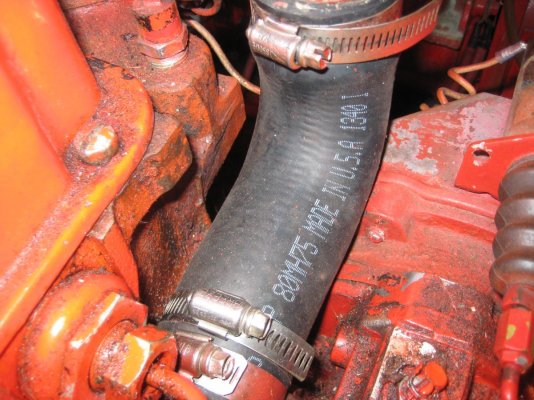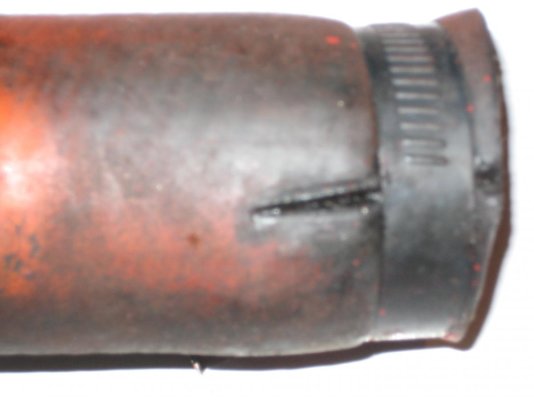This is what worries me about engine hoses. This came from my Lehman 120. It's the hose that runs from the bottom of the expansion tank.
The impression is from being pressed against the engine block.
Luckily I replaced before it wore thru, but I never would have seen it.
Looks like a cheap standard hose to replace.
I have an old boat, and old engines from 1970.
I bought the boat in 1998.
I replaced a few hoses.
However most of the hoses are OEM original from 1970.
I have over the last 5 years rebuilt the engines, and all the hoses are just fine.
I have never seen the fantastic great old hoses from 1970 for sale anywhere.
Most do have the steel coil, some don't.
These good old hoses, you can see a spiral wound pattern in the rubber casing, and the surface has a rough texture pattern. And the rubber is not cracked, hardened, split, it is perfect.
Now get this, some hoses are not from 1970, newer design have a color stripe one then, and in some of those the outer rubber spli, like a rubber dry rot, yet the inner liner is perfect as is the steel coil.
So I got some cloth friction tape (Ace hardware $2 a roll) and overwrapped then and of course that sealed up the surface and they look great toot.
For example this, a newer hose was spplitting and another hose I wrapped with the friction tape. See the inner liner is fine, I do not want the outer case to fall apart so I wrapped them. I did this many years ago and they are still looking great.
For example this really old great quality hose on left side in perfect shape painted a little green from 1970

 :lol:
:lol:



